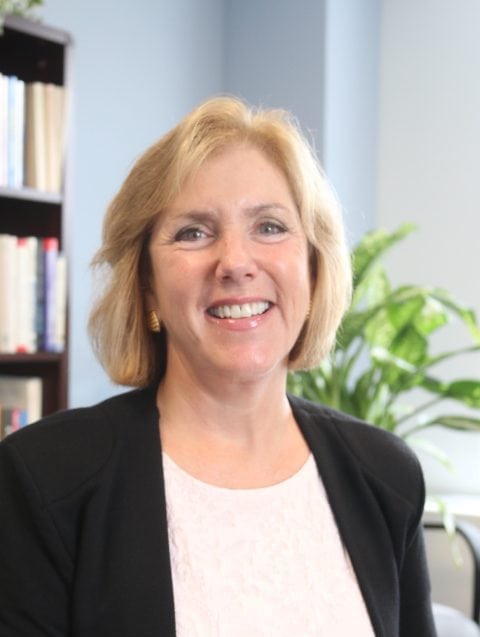
Betsy Brand, AYPF Executive Director
In addition to celebrating St. Patrick’s Day and hopefully the arrival of spring, at least in the DC area, March is National Developmental Disabilities Awareness Month, a time to focus on the advancements, inclusion, and contributions of individuals with developmental disabilities (DD).
While I believe we should be proud and pleased at the advancements that many individuals with DD have made since President Reagan first proclaimed March as DD Awareness Month in 1987, there is clearly more progress to be made, especially with regard to preparing youth with DD for college and careers. A few statistics help make this case.
The national high school graduation rate has reached a high of 84 percent, but students with disabilities only graduate at a rate of 67 percent, a significant gap. Between 85-90 percent of students with disabilities are able to meet the same high school graduation requirements as other students when provided with the appropriate instruction, supports, and accommodations, but only 19 states and the District of Columbia require the same course requirements for students with and without disabilities to earn a regular high school diploma. This is borne out by the statistic that 11 percent of students with disabilities earn a certificate of completion, a modified diploma, or some similar document that does not meet the same standards for graduation as those students without disabilities.
Individuals with disabilities also have poorer employment outcomes compared to individuals without disabilities. In 2015, the employment rate for people with disabilities ages 21 to 64 was less than half that for people without disabilities (35.2 percent vs. 78.5 percent. Earnings gaps exist as well. Research shows that even with the same education level, people with disabilities earn nearly $10,700 or 37 percent less than their peers without disabilities.
High Expectations
Given these gaps, what can we do about them? First, is to hold all students with disabilities to high expectations and ensure that they have access to a curriculum that will allow them to meet state academic standards, not a watered-down version of them. Students may need accommodations, differentiated instruction, various supports, or assistive technology, but they should aim to reach the highest standards possible. Research shows that students with disabilities that earn 80 percent or more academic credits in general education settings were twice as likely to enroll and persist in postsecondary education than students receiving fewer credits in general education settings. That should be impetus enough for policy leaders to require such a change.
Transition Planning
Another area that needs sustained attention is transition planning. While the Individual with Disabilities Education Act (IDEA) requires that a transition plan be in place by the time a student with a disability turns 16, in reality, planning should start much, much earlier. If does not start until grade 10 or 11, it might be too late to ensure that students take the right courses required for certain postsecondary programs. Additionally, starting earlier allows students to have time to learn about and explore different careers and college options. Parents should be involved in the process early on as well, so they can support their child but also learn about available financial assistance. Finally, the team involved in transition planning should connect with relevant systems and programs, such as the workforce development system and vocational rehabilitation, to ensure all options are explored. Several states, such as Nebraska, Oregon, and Texas, have been proactive in supporting the transition planning process.
Personalized and Competency-based Learning
The move to personalized and competency-based learning could benefit students with disabilities in many ways. Instruction can be individualized to meet the needs, interests, and skills of the student and allow students to learn at their own pace without traditional time constraints. Personalized and competency-based learning allows students to demonstrate mastery in various ways, through exercises like portfolios, presentations, and performances. These learning techniques give students with disabilities avenues beyond just standardized testing to demonstrate what they know and can. Personalized learning can also be project-based, allowing for interdisciplinary study and opportunities to develop a wide range of skills such as time and resource management, organization, communication, and presentation skills, and teamwork.
Dual and Concurrent Enrollment
Dual and concurrent enrollment programs allow high school students to earn college credit and to learn about college courses and programs. Knowing more about and experiencing college curriculum can ease students’ transitions to postsecondary education by allowing them to become familiar with college and see themselves as college-goers. Such programs may benefit students with disabilities in other ways. For older students with disabilities that are in high school past the age of 18, they can take classes on a college campus where they can interact with their peers and experience greater independence and self-sufficiency. Dual enrollment provides a greater sense of freedom and choice, but also ensures that the student continues to have the support network of the high school as needed.
To ensure that individuals with developmental disabilities are included in the workplace and can become self-sufficient adults, we must give them support and opportunities to develop college and career readiness skills throughout their lives. While some schools are using the strategies described above, too many students with disabilities lack these academic and career opportunities. Let’s change that equation now!
For more information, check out How ESSA and IDEA Can Support College and Career Readiness for Students with Disabilities: Considerations for States.


